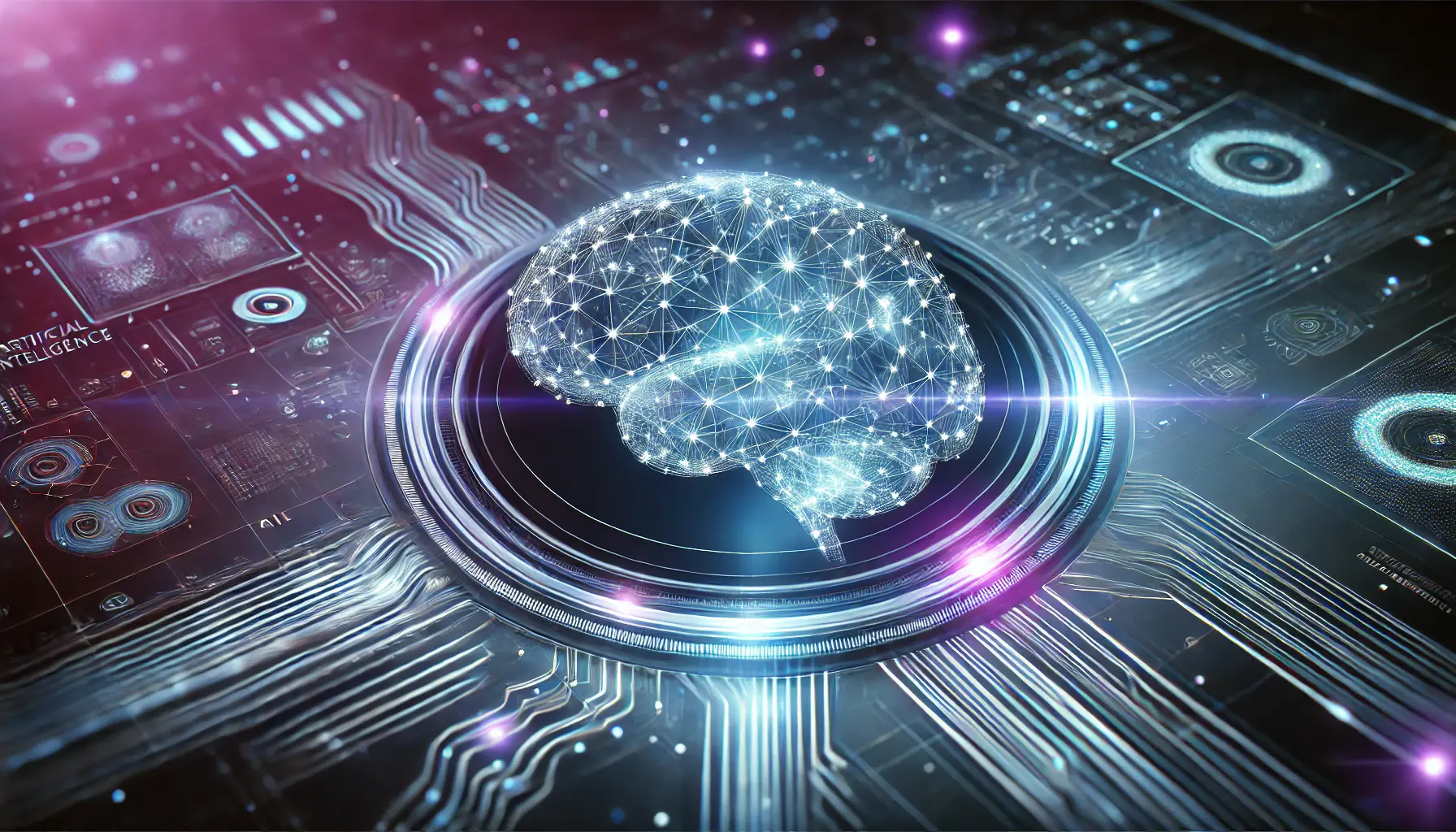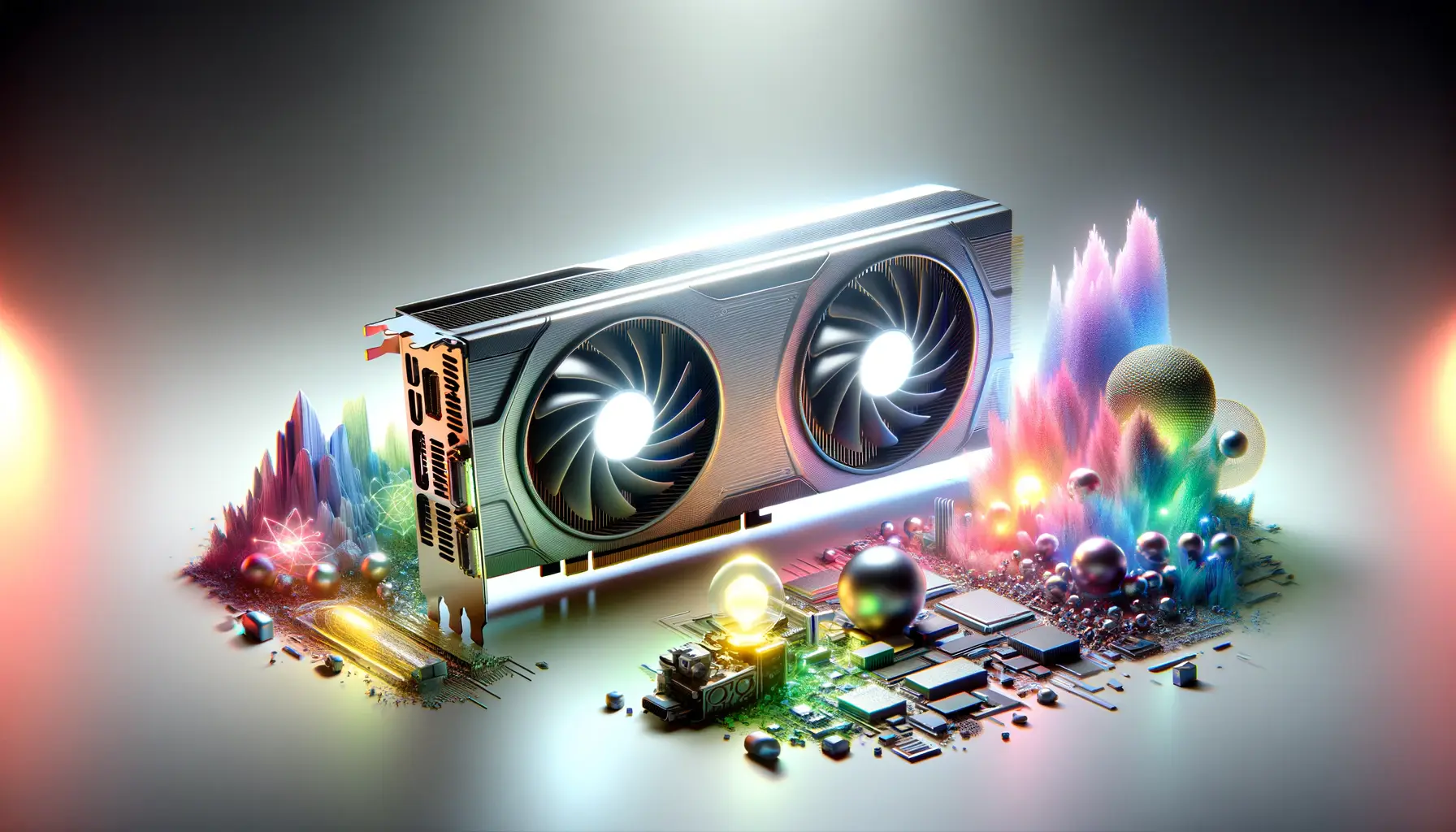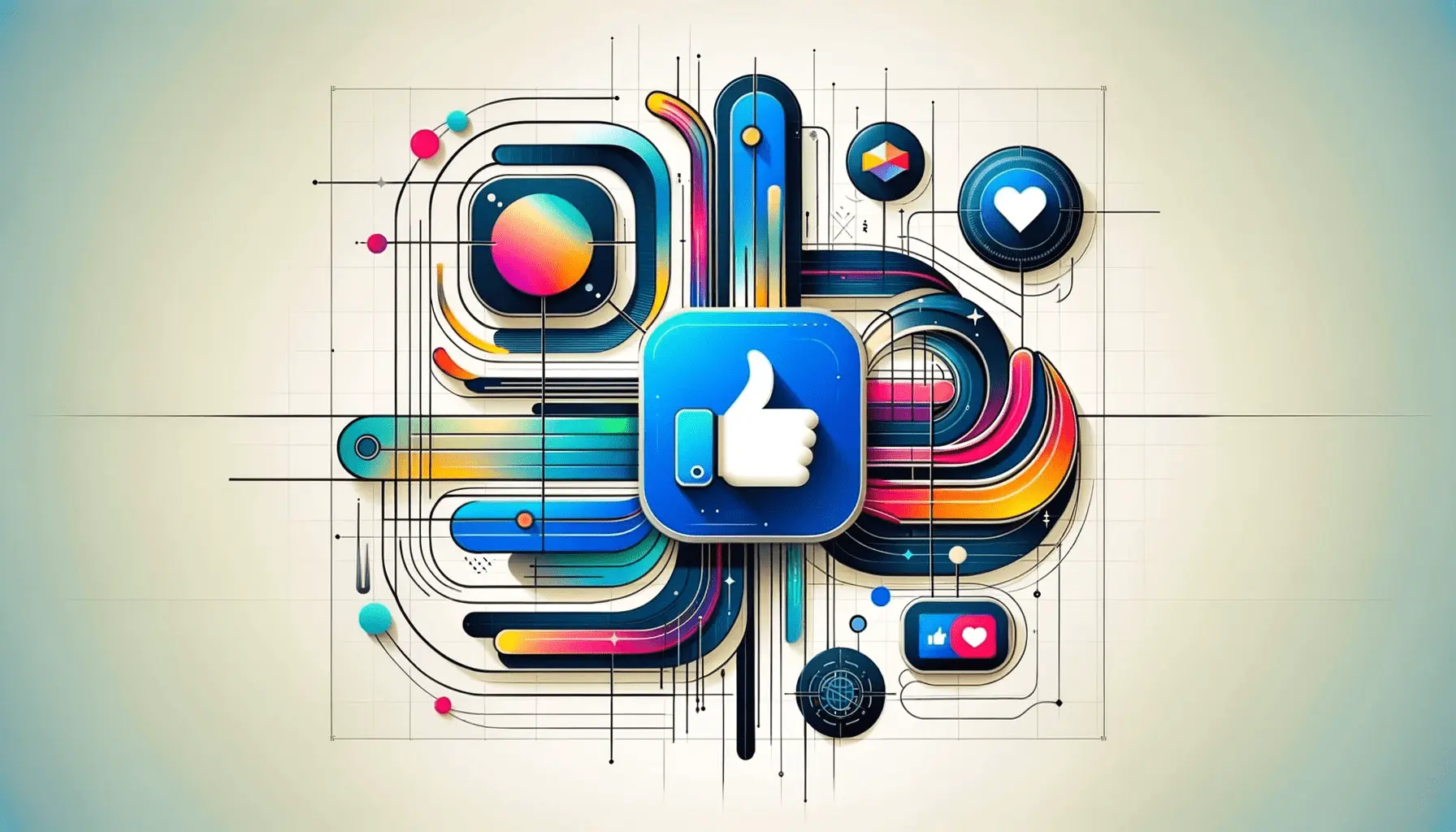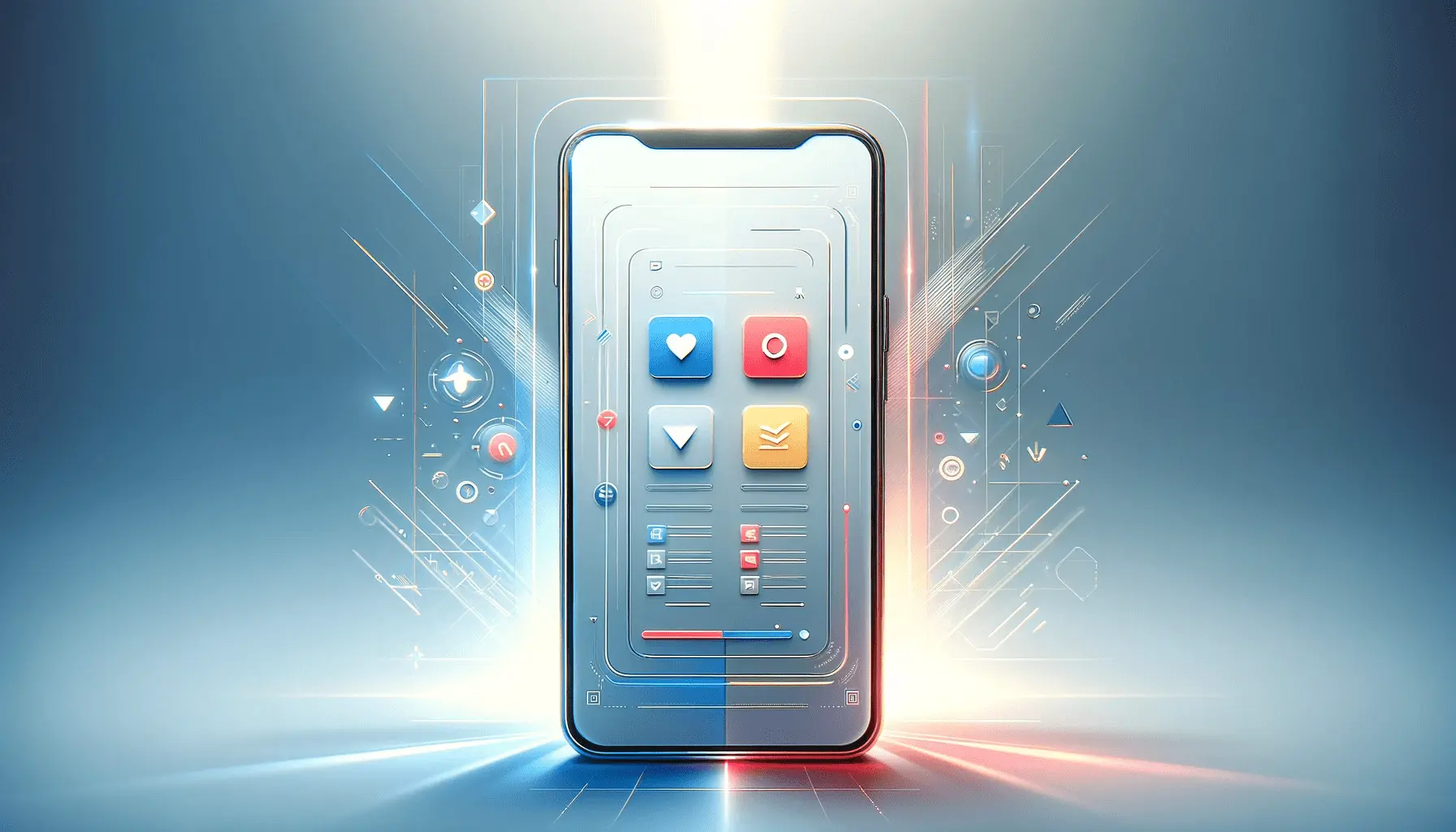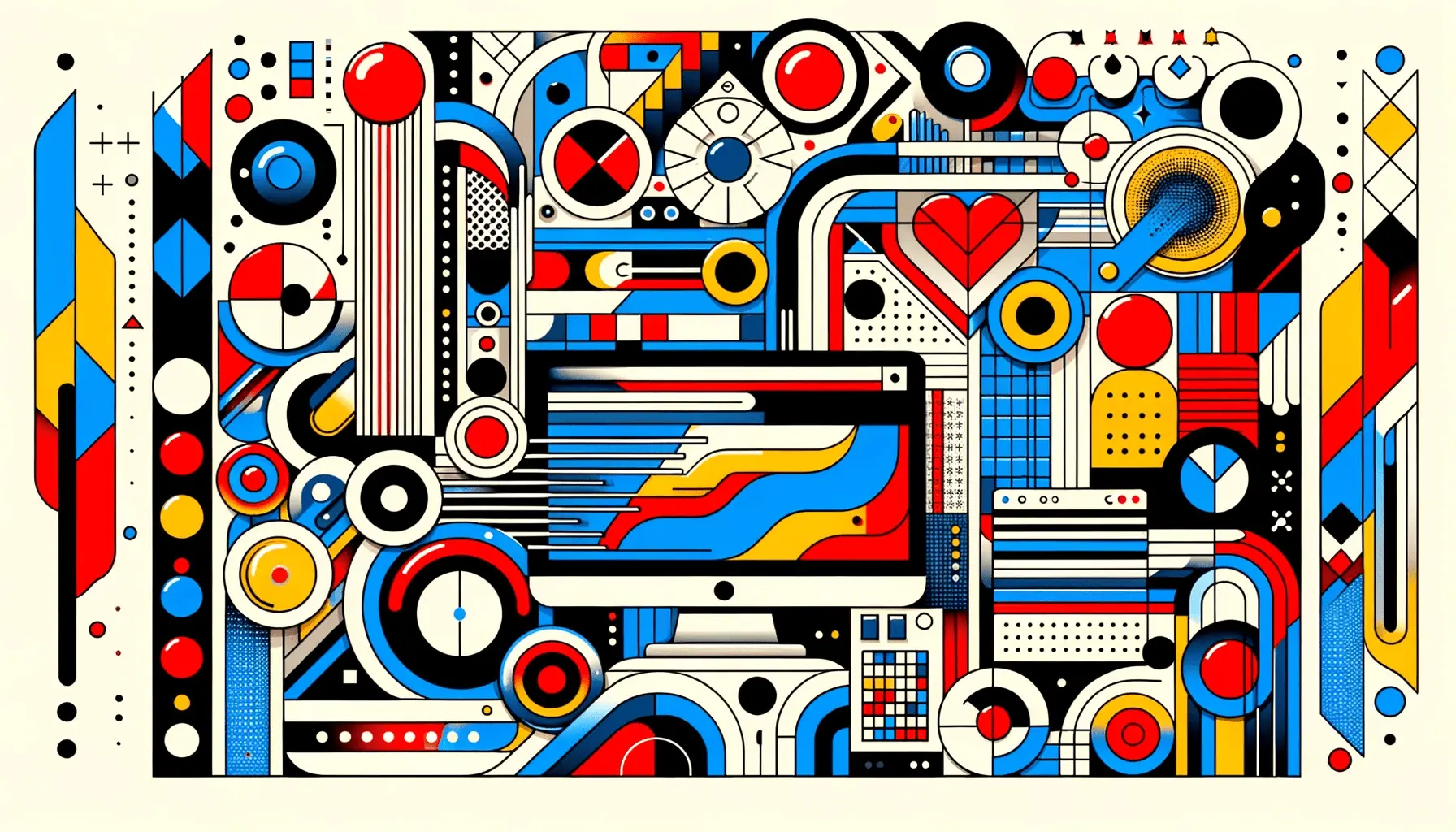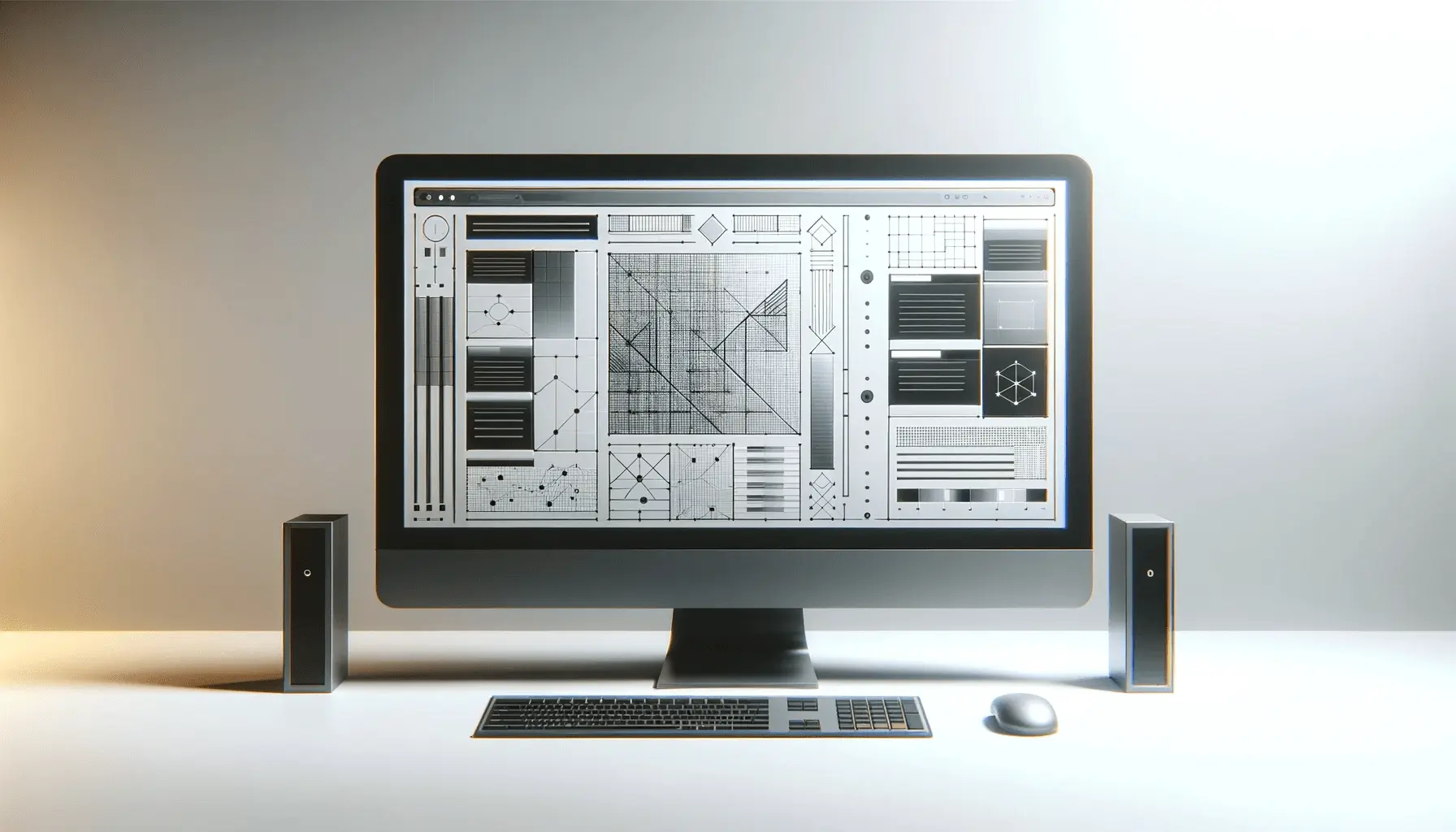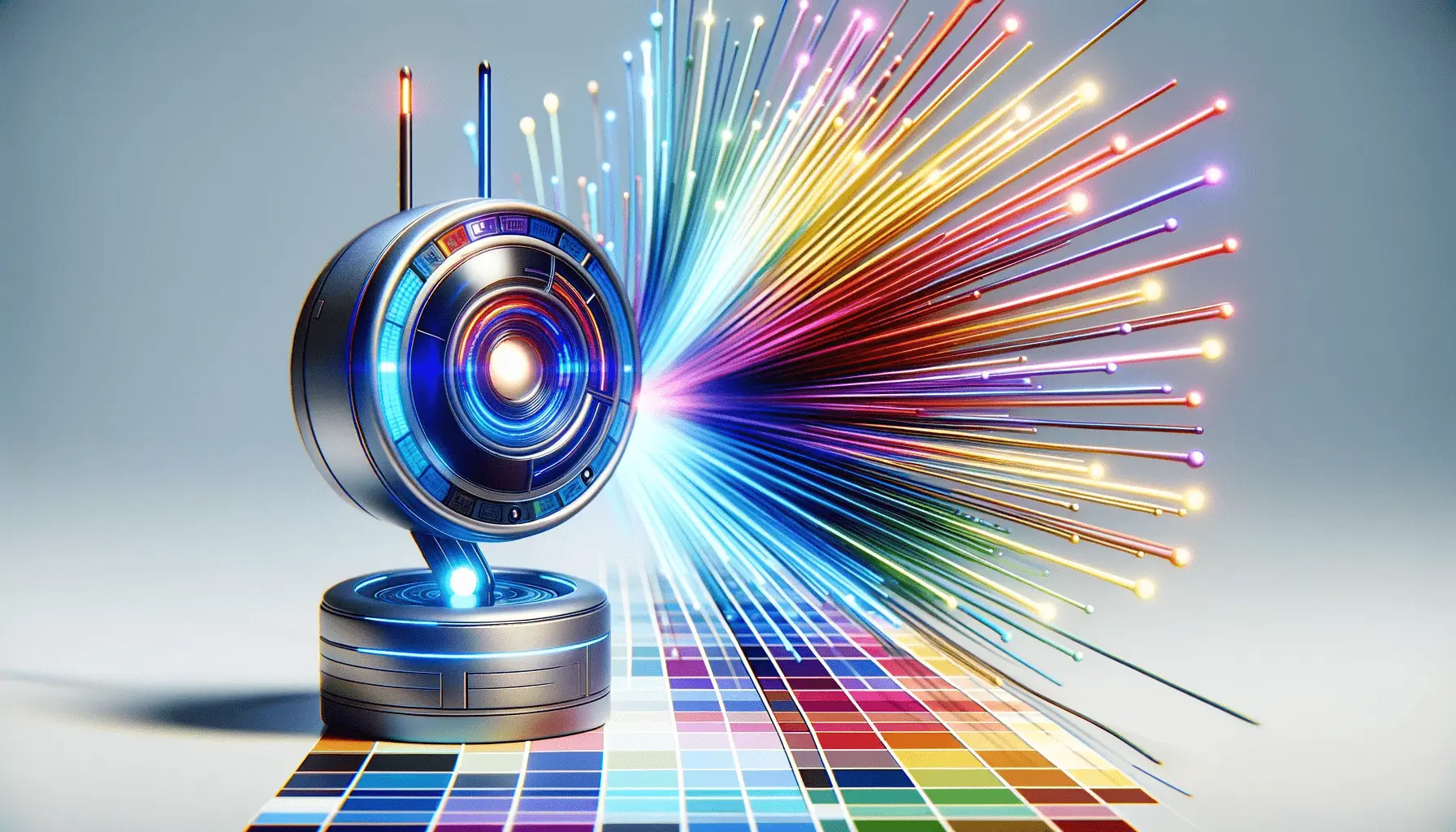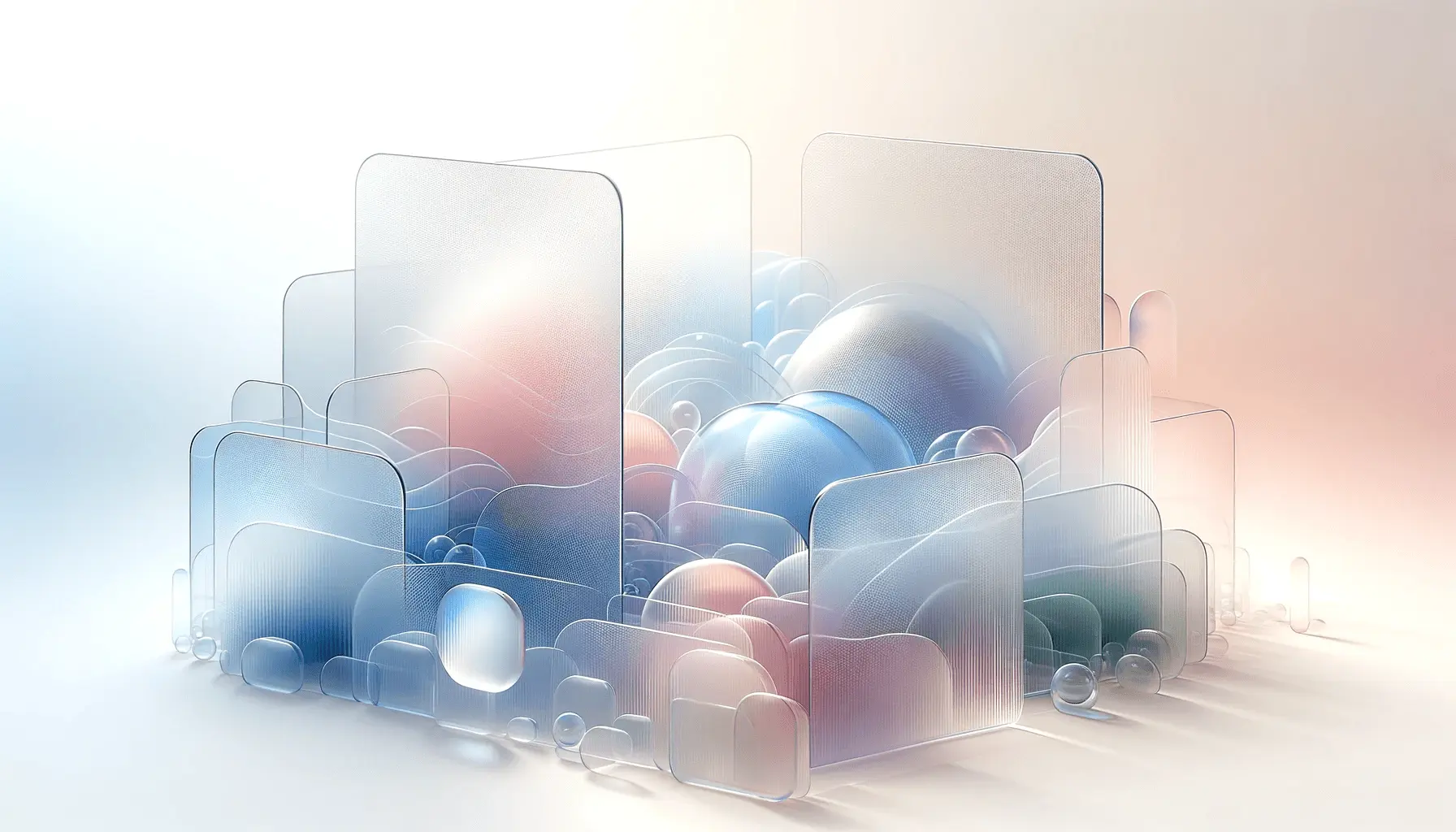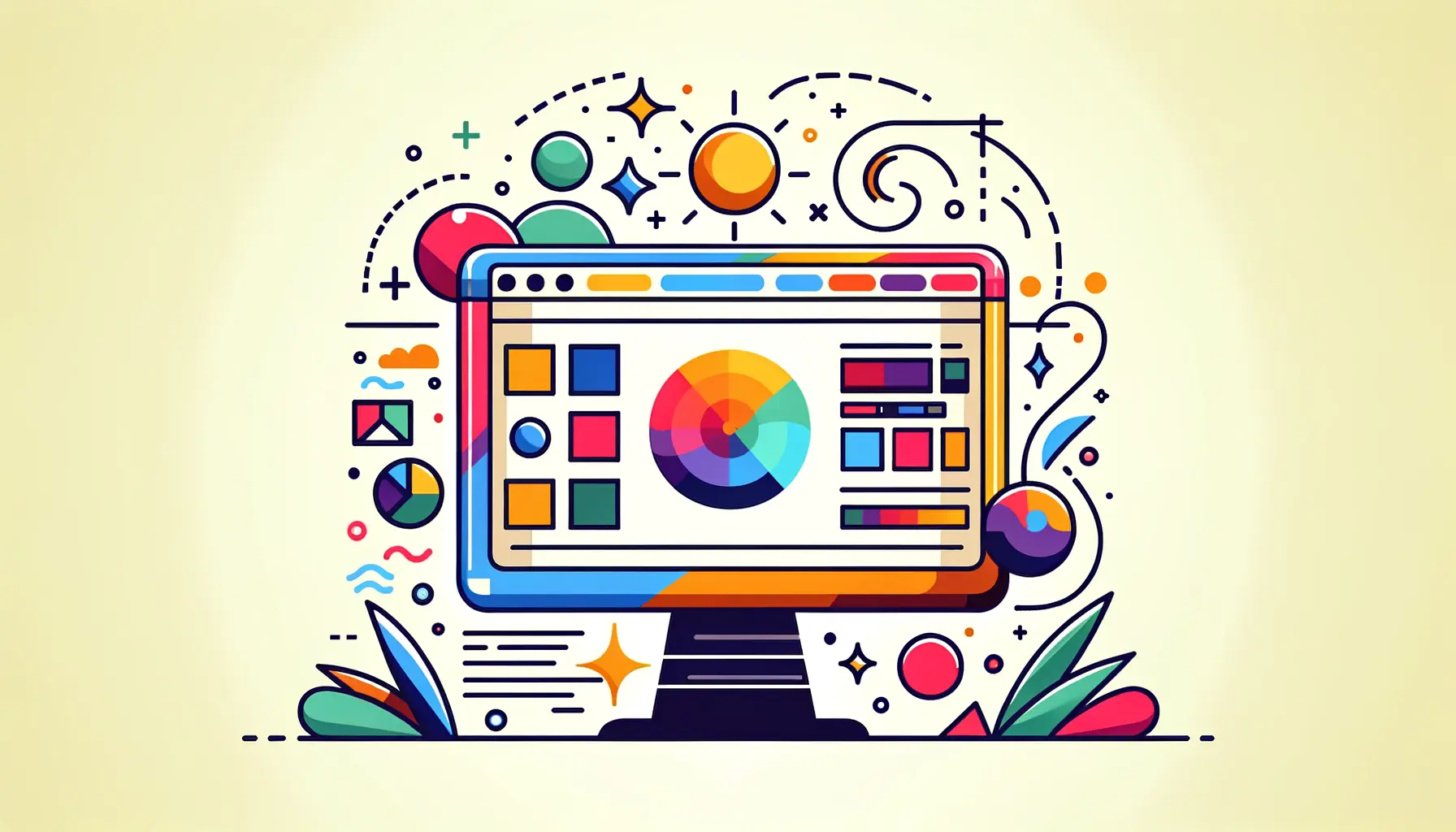The realm of artificial intelligence (AI) has been evolving at an unprecedented pace, with Claude AI emerging as a pivotal force in the transformation of visual aesthetics.
This innovative technology, developed by Anthropic, stands at the forefront of the AI revolution, redefining the boundaries of creativity and design.
Claude AI’s ability to enhance visuals is not just a testament to its technical prowess but also to its potential to revolutionize industries and creative processes.
At its core, Claude AI is designed to understand and generate human-like text, but its capabilities extend far beyond.
With its advanced natural language processing and machine learning techniques, Claude AI is carving a niche in the visual domain, offering tools that can significantly enhance the aesthetic appeal of digital content.
This article delves into the transformative impact of Claude AI on visuals, exploring its applications, benefits, and the future it heralds for digital aesthetics.
- The Evolution of AI in Visual Enhancement
- Breaking Down Claude AI’s Visual Capabilities
- Real-World Applications and Success Stories
- Challenges and Considerations in AI-Driven Visual Enhancement
- Integrating Claude AI into Creative Workflows
- Future Trends in AI-Driven Visual Enhancement
- Maximizing the Impact of AI in Visual Arts and Design
- Envisioning the Future of Visual Enhancement with Claude AI
- Claude AI Visuals: Frequently Asked Questions
The Evolution of AI in Visual Enhancement
The journey of AI in the realm of visual enhancement has been marked by significant milestones, from simple image recognition algorithms to the sophisticated generative models we see today.
Claude AI represents the culmination of years of research and development, offering a glimpse into the future of how AI can transform visual content.
Its ability to process and understand complex data sets allows for the creation of visuals that are not only appealing but also deeply resonant with the intended audience.
One of the key aspects of Claude AI’s impact on visuals is its capacity for customization and personalization.
By analyzing vast amounts of data, Claude AI can identify patterns and preferences, tailoring visuals to suit specific tastes and requirements.
This level of personalization is unprecedented and opens up new avenues for creators and designers to explore.
Enhancing Creative Processes
The integration of Claude AI into the creative process offers a blend of efficiency and innovation.
Artists and designers can leverage the AI’s capabilities to refine their ideas and bring them to life with greater precision and flair.
Whether it’s through generating intricate designs, suggesting color schemes, or optimizing layouts, Claude AI acts as a creative partner, expanding the possibilities of what can be achieved.
Moreover, Claude AI’s role in streamlining workflows cannot be overstated.
By automating certain aspects of the design process, it allows creators to focus on the more nuanced elements of their work.
This not only enhances productivity but also ensures that the final product is of the highest quality.
Claude AI’s ability to enhance visuals lies not just in its technical capabilities but in its potential to inspire creativity and innovation in design.
Applications Across Industries
The versatility of Claude AI means its applications span across various industries, from marketing and advertising to gaming and virtual reality.
In marketing, for example, Claude AI can be used to create visually compelling campaigns that are tailored to the target audience, increasing engagement and conversion rates.
Similarly, in the gaming industry, Claude AI can enhance the visual experience by generating realistic textures and environments, immersing players in the game world like never before.
Furthermore, the potential of Claude AI in educational and training applications is immense.
By creating realistic simulations and visual aids, it can facilitate a more interactive and engaging learning experience.
This not only aids in knowledge retention but also makes learning more accessible and enjoyable for students.
Breaking Down Claude AI’s Visual Capabilities
The core of Claude AI’s visual enhancement capabilities lies in its sophisticated AI algorithms and deep learning models.
These technologies enable Claude AI to interpret, generate, and refine visuals in ways that were previously unimaginable.
Let’s explore the key components that make up Claude AI’s visual capabilities and how they contribute to enhancing aesthetics.
Understanding and Interpreting Visual Data
Claude AI’s ability to understand and interpret visual data is foundational to its visual enhancement capabilities.
By employing advanced image recognition and processing techniques, Claude AI can analyze visual elements within images and videos, identifying patterns, textures, and colors.
This understanding allows it to make informed decisions about how to best enhance or alter visuals to achieve the desired aesthetic effect.
Moreover, Claude AI’s proficiency in interpreting visual data extends to understanding the context and emotion conveyed in visual content.
This enables it to not only enhance the technical aspects of visuals but also to ensure that the enhancements align with the intended message or feeling.
Generative Models for Visual Creation
At the heart of Claude AI’s visual capabilities are its generative models, which allow it to create new visual content from scratch or based on existing inputs.
These models can generate:
- High-resolution images tailored to specific themes or styles.
- Unique designs for web and print media.
- Custom illustrations for books, articles, and marketing materials.
These generative models are trained on vast datasets of visual content, enabling them to produce visuals that are not only high quality but also diverse and innovative.
Personalization and Customization
One of Claude AI’s most significant contributions to visual enhancement is its ability to personalize and customize visuals.
This is achieved through:
- Analysis of user preferences and historical data to tailor visuals to individual tastes.
- Adaptation of visual styles to match brand identities or specific project requirements.
- Interactive tools that allow users to specify parameters for visual generation, such as color schemes, motifs, and themes.
This level of personalization ensures that the visuals produced by Claude AI are not only aesthetically pleasing but also highly relevant and effective in engaging the intended audience.
The fusion of Claude AI’s understanding of visual data, generative models, and personalization techniques represents a new frontier in visual enhancement, offering unprecedented opportunities for creativity and innovation.
Enhancing Visual Content for Digital Platforms
Claude AI’s visual capabilities are particularly beneficial for enhancing content across digital platforms.
Whether it’s for social media, websites, or digital advertisements, Claude AI can optimize visuals to ensure they are:
- Optimized for different platforms and devices, ensuring consistent quality and responsiveness.
- Engaging and eye-catching, increasing user interaction and retention.
- Aligned with the latest trends and best practices in digital design.
This adaptability makes Claude AI an invaluable tool for businesses and creators looking to stand out in the digital landscape.
Real-World Applications and Success Stories
The practical applications of Claude AI in enhancing visuals span across various sectors, demonstrating its versatility and effectiveness.
From transforming marketing strategies to revolutionizing product design, Claude AI’s impact is profound.
Here, we explore some real-world applications and success stories that highlight the transformative power of Claude AI in the visual domain.
Revolutionizing Marketing with Personalized Visuals
In the competitive world of marketing, personalized visuals have become a key differentiator.
Claude AI has been instrumental in enabling brands to create marketing materials that resonate deeply with their target audience.
By analyzing customer data and preferences, Claude AI generates visuals that are not only appealing but also highly personalized, leading to increased engagement and conversion rates.
A notable success story involves a retail brand that leveraged Claude AI to tailor its online advertising visuals, resulting in a 40% increase in click-through rates and a significant boost in sales.
Enhancing User Experience in Digital Products
Digital products, including apps and websites, have also benefited from Claude AI’s visual enhancement capabilities.
By generating dynamic and aesthetically pleasing user interfaces, Claude AI has helped improve user engagement and satisfaction.
A leading tech company integrated Claude AI into its app development process, enabling the creation of more intuitive and visually appealing app designs.
This integration not only reduced the app’s development time by 30% but also improved user retention rates by 25%.
Transforming Educational Content with Interactive Visuals
Educational content has been transformed through the use of interactive and engaging visuals generated by Claude AI.
By creating visuals that are both informative and captivating, educators can enhance the learning experience, making complex concepts easier to understand.
A case study in this context is an online learning platform that utilized Claude AI to develop interactive visual aids for science courses.
This approach led to a noticeable improvement in students’ comprehension and retention of difficult subjects.
Claude AI’s ability to generate personalized, dynamic, and interactive visuals has proven to be a game-changer across industries, driving innovation and enhancing user experiences.
Streamlining Content Creation for Social Media
Social media platforms are constantly in need of fresh and engaging content.
Claude AI has played a pivotal role in streamlining the content creation process for social media marketers and influencers.
By generating visually appealing posts, banners, and videos, Claude AI enables content creators to maintain a consistent and captivating online presence.
An influencer reported a 50% reduction in content creation time and a significant increase in follower engagement after incorporating Claude AI into their content strategy.
Advancing Film and Video Production
The film and video production industry has also embraced Claude AI for its ability to enhance visual effects and animations.
By automating certain aspects of the production process, Claude AI allows filmmakers to focus on storytelling and creativity.
A notable example is an independent film studio that used Claude AI to create realistic visual effects on a limited budget, enabling the studio to compete with larger production companies.
These success stories underscore the transformative impact of Claude AI on the visual landscape, showcasing its potential to enhance aesthetics, streamline processes, and personalize user experiences across various domains.
Challenges and Considerations in AI-Driven Visual Enhancement
While Claude AI represents a significant advancement in visual enhancement, its implementation is not without challenges.
As with any AI-driven technology, there are considerations that must be addressed to fully leverage its capabilities while mitigating potential drawbacks.
This section explores the key challenges and considerations in the realm of AI-driven visual enhancement.
Ensuring Ethical Use of AI in Visuals
The ethical use of AI in creating and enhancing visuals is a paramount concern.
As AI technologies like Claude AI become more sophisticated, the potential for misuse increases.
Key ethical considerations include:
- Preventing the creation of misleading or deceptive visuals.
- Ensuring privacy and consent in the use of personal data for generating personalized visuals.
- Maintaining transparency about the use of AI in visual creation and enhancement.
Addressing these ethical considerations requires robust guidelines and oversight to ensure that AI-driven visual enhancement is used responsibly and for the benefit of all stakeholders.
Overcoming Technical Limitations
Despite its advanced capabilities, Claude AI, like any technology, has its limitations.
Technical challenges that need to be addressed include:
- Improving the AI’s understanding of complex visual contexts and nuances.
- Enhancing the quality and resolution of generated visuals to meet professional standards.
- Reducing the computational resources required for generating high-quality visuals, making the technology more accessible.
Overcoming these technical limitations is crucial for expanding the applicability and effectiveness of AI-driven visual enhancement technologies.
Adapting to Rapid Technological Changes
The field of AI is evolving rapidly, with new advancements and techniques emerging at a fast pace.
Staying abreast of these changes and integrating the latest developments into visual enhancement practices pose significant challenges.
Organizations and individuals must:
- Invest in continuous learning and development to keep up with AI advancements.
- Adopt flexible and scalable solutions that can easily incorporate new AI features and capabilities.
- Engage with the AI community to share knowledge and best practices for leveraging AI in visual enhancement.
Adapting to technological changes is essential for maximizing the benefits of AI-driven visual enhancement and ensuring long-term success.
While the challenges in implementing AI-driven visual enhancement are significant, they are not insurmountable. With careful consideration and strategic planning, the potential of AI to transform the visual landscape can be fully realized.
Addressing User Expectations and Trust
Building user trust and meeting expectations is critical in the adoption of AI-driven visual enhancement technologies.
Users may have concerns regarding the authenticity and artistic integrity of AI-generated visuals.
To address these concerns, it is important to:
- Clearly communicate the role of AI in the creative process.
- Ensure that AI-generated visuals maintain a high level of quality and originality.
- Provide options for users to customize and influence the AI’s output, fostering a sense of control and collaboration.
By addressing user expectations and building trust, Claude AI and similar technologies can be more effectively integrated into creative workflows, enhancing the value they bring to visual content creation.
Integrating Claude AI into Creative Workflows
The integration of Claude AI into creative workflows marks a significant shift in how visual content is created and enhanced.
This process involves not just the adoption of new technology but also a rethinking of traditional creative processes.
By seamlessly blending AI capabilities with human creativity, Claude AI offers a new paradigm for visual enhancement.
Streamlining Design and Production
Integrating Claude AI into design and production workflows can significantly streamline operations, reducing time and effort spent on routine tasks.
Key benefits include:
- Automated generation of design elements, speeding up the initial stages of the creative process.
- Enhanced ability to experiment with different aesthetics and styles, thanks to AI’s rapid prototyping capabilities.
- Improved efficiency in content production, allowing creative teams to focus on strategic and innovative aspects of projects.
By automating and enhancing various steps in the creative process, Claude AI enables designers and creators to achieve higher productivity and foster innovation.
Facilitating Collaboration Between AI and Creatives
The most effective use of Claude AI in visual enhancement comes from a collaborative approach that leverages both AI capabilities and human creativity.
Achieving this synergy involves:
- Training creative teams on how to best utilize AI tools and features to complement their skills.
- Developing workflows that allow for easy input and feedback between AI systems and human users, ensuring that the final output aligns with creative vision and goals.
- Encouraging a culture of experimentation and open-mindedness towards AI-generated ideas and solutions.
This collaborative approach not only enhances the creative process but also leads to more innovative and engaging visual content.
Customizing AI Tools to Fit Creative Needs
One of the strengths of Claude AI is its adaptability to various creative needs and contexts.
Customization options allow users to tailor AI tools to their specific requirements, including:
- Adjusting parameters and settings to influence the style, tone, and detail of AI-generated visuals.
- Integrating AI tools into existing software and platforms used by creatives, ensuring a seamless workflow.
- Developing bespoke AI models for specialized tasks or industries, maximizing the relevance and effectiveness of AI-driven enhancements.
Customization ensures that Claude AI can be effectively integrated into diverse creative workflows, providing valuable support across a wide range of projects and applications.
The integration of Claude AI into creative workflows represents a transformative opportunity for the visual content creation industry, offering new ways to enhance productivity, foster innovation, and create visually stunning content.
Overcoming Resistance to AI in Creative Fields
Despite its potential benefits, the integration of AI like Claude AI into creative workflows can sometimes meet resistance from professionals concerned about the impact on creativity and job security.
Overcoming this resistance requires:
- Education and awareness initiatives to highlight the supportive role of AI in enhancing, not replacing, human creativity.
- Success stories and case studies demonstrating the positive impact of AI integration on creative projects and careers.
- Opportunities for hands-on experience with AI tools, allowing creatives to see firsthand how AI can benefit their work.
Addressing concerns and demonstrating the value of AI in creative processes are crucial steps in fostering acceptance and encouraging the adoption of AI-driven visual enhancement tools like Claude AI.
Future Trends in AI-Driven Visual Enhancement
The landscape of AI-driven visual enhancement is rapidly evolving, with new technologies and applications emerging at a swift pace.
Claude AI, at the forefront of this evolution, is not only transforming current practices but also shaping future trends in the field.
As we look ahead, several key trends are poised to define the next wave of innovation in AI-driven visual enhancement.
Advancements in Generative AI Models
Generative AI models, like those powering Claude AI, are set to become even more sophisticated, enabling the creation of visuals that are increasingly complex and lifelike.
Future advancements may include:
- Enhanced resolution and detail in generated images, pushing the boundaries of realism in digital art and design.
- Improved understanding of artistic styles and techniques, allowing AI to replicate or innovate upon a wider range of visual aesthetics.
- Greater interactivity in the creative process, with AI models responding dynamically to real-time input and feedback from users.
These advancements will further blur the line between AI-generated and human-created visuals, opening up new possibilities for creativity and expression.
Increased Personalization and Interactivity
As AI technologies become more integrated into our daily lives, the demand for personalized and interactive visual content will grow.
Future trends in AI-driven visual enhancement will likely focus on:
- Developing AI systems that can create highly personalized visuals based on individual user preferences, history, and context.
- Enhancing the interactivity of visual content, with AI-generated visuals adapting in real-time to user interactions and environmental changes.
- Expanding the use of AI in augmented reality (AR) and virtual reality (VR) environments, creating immersive and customizable visual experiences.
These trends will make visual content more engaging and relevant, enhancing user experiences across a variety of digital platforms.
Integration Across Industries
The application of AI-driven visual enhancement is set to expand across industries, beyond traditional creative fields.
Potential areas of growth include:
- Healthcare, for visualizing complex medical data and creating patient-specific models for educational and diagnostic purposes.
- Manufacturing, where AI can enhance the design and visualization of products, streamlining the development process.
- Education, with AI-generated visuals providing more engaging and effective learning materials across subjects.
This broader integration will leverage the power of AI to improve outcomes and efficiencies in diverse sectors, demonstrating the versatility of AI-driven visual enhancement technologies.
The future of AI-driven visual enhancement is characterized by continuous innovation, with technologies like Claude AI leading the way in creating more sophisticated, personalized, and interactive visual experiences. As these trends unfold, the potential for AI to transform visual content creation and consumption is boundless.
Addressing Ethical and Societal Implications
As AI-driven visual enhancement technologies advance, addressing their ethical and societal implications will become increasingly important.
Future developments must consider:
- Ensuring the responsible use of AI in creating and distributing visual content, with a focus on transparency and accountability.
- Addressing concerns related to privacy, consent, and the potential for misuse of AI-generated visuals.
- Promoting inclusivity and diversity in AI-generated content, ensuring that visual enhancements reflect and respect the diversity of human experiences.
By proactively addressing these issues, the future of AI-driven visual enhancement can be shaped in a way that maximizes benefits while minimizing potential harms, ensuring that these technologies contribute positively to society.
Maximizing the Impact of AI in Visual Arts and Design
The integration of AI technologies like Claude AI into the fields of visual arts and design heralds a new era of creativity and innovation.
As we explore the potential of AI to transform these domains, it’s essential to consider strategies for maximizing its impact.
By leveraging AI effectively, artists and designers can unlock new levels of creativity, efficiency, and personalization in their work.
Embracing AI as a Collaborative Partner
To fully harness the potential of AI in visual arts and design, professionals should view AI not as a replacement but as a collaborative partner.
This partnership can be maximized by:
- Utilizing AI to automate routine tasks, freeing up time for creative exploration and experimentation.
- Leveraging AI’s data analysis capabilities to gain insights into trends, preferences, and patterns that can inform design decisions.
- Exploring AI-generated suggestions as a source of inspiration, using them as a springboard for further creative development.
By embracing AI as a tool that complements human creativity, artists and designers can enhance their creative processes and produce work that is innovative, relevant, and impactful.
Investing in AI Education and Skills Development
As AI becomes increasingly integral to visual arts and design, investing in AI education and skills development is crucial.
This investment can take several forms, including:
- Participating in workshops, courses, and training programs focused on AI technologies and their application in creative fields.
- Staying informed about the latest AI developments and exploring how they can be applied to visual arts and design projects.
- Building a community of practice by connecting with other professionals who are exploring the use of AI in creative work, sharing knowledge, and learning from each other’s experiences.
By developing AI-related skills and knowledge, artists and designers can more effectively leverage AI tools like Claude AI, enhancing their ability to create compelling and innovative visual content.
Exploring New Forms of Expression
AI opens up new avenues for artistic expression and design innovation.
To maximize the impact of AI in visual arts and design, professionals should:
- Experiment with AI-generated art and design, exploring the unique aesthetics and possibilities that AI can bring to their work.
- Consider how AI can be used to create interactive and dynamic visual experiences, pushing the boundaries of traditional static art and design.
- Investigate the potential of AI to facilitate cross-disciplinary collaborations, combining insights and techniques from various fields to create novel visual expressions.
By exploring new forms of expression enabled by AI, artists and designers can expand the scope of their work, engaging audiences in new and meaningful ways.
The impact of AI on visual arts and design is profound, offering opportunities for enhanced creativity, efficiency, and personalization. By embracing AI as a collaborative partner, investing in education and skills development, and exploring new forms of expression, professionals can maximize the benefits of AI, leading to a future where visual arts and design are more dynamic, inclusive, and innovative than ever before.
Envisioning the Future of Visual Enhancement with Claude AI
The journey through the capabilities, applications, and future prospects of Claude AI in enhancing aesthetics has illuminated the transformative potential of AI in the realm of visual arts and design.
As we stand on the brink of a new era in creative expression and visual communication, the integration of Claude AI offers a glimpse into a future where the boundaries between human creativity and artificial intelligence become increasingly blurred.
The Synergy of Human Creativity and AI
The collaboration between human artists, designers, and Claude AI heralds a future where creativity knows no bounds.
This partnership promises to:
- Unlock unprecedented levels of personalization in visual content, catering to the unique tastes and preferences of individuals.
- Streamline creative workflows, allowing creators to focus on innovation and storytelling.
- Open up new avenues for artistic expression, enabling creators to explore complex concepts and narratives through enhanced visuals.
Overcoming Challenges and Embracing Opportunities
While the path forward with Claude AI is filled with promise, it also presents challenges that must be navigated with care.
Ethical considerations, technical limitations, and the need for continuous learning and adaptation are just a few of the hurdles that lie ahead.
However, by addressing these challenges head-on, the creative community can harness the full potential of Claude AI to:
- Drive innovation in visual arts and design, pushing the envelope of what is possible.
- Enhance the impact and reach of visual content, making it more engaging and accessible to diverse audiences.
- Foster a culture of collaboration and experimentation, where AI serves as a catalyst for creative exploration.
A Future Shaped by Creativity and AI
The integration of Claude AI into the visual arts and design represents more than just a technological advancement; it signifies a shift in how we conceive of and interact with visual content.
As we look to the future, it is clear that Claude AI will play a pivotal role in shaping the landscape of visual enhancement, offering tools and opportunities that were once unimaginable.
By embracing the possibilities presented by Claude AI, the creative community can embark on a journey of discovery and innovation, creating visual content that not only captivates and inspires but also pushes the boundaries of human creativity.
Claude AI Visuals: Frequently Asked Questions
Explore the most common inquiries about Claude AI’s capabilities in enhancing visual aesthetics, offering insights into its innovative applications.
While Claude AI can identify basic elements in images, it does not yet match human-level interpretation of complex visuals or emotions.
Claude AI stands out for its ability to generate personalized and highly creative visuals, leveraging advanced machine learning models.
By creating visually compelling and tailored content, Claude AI significantly increases engagement and conversion rates in marketing campaigns.
Yes, Claude AI can produce original art pieces, offering new possibilities for creativity and expression in the digital art world.
Absolutely, Claude AI’s user-friendly interface and adaptable features make it accessible and beneficial for both technical and non-technical users.
Claude AI adheres to strict ethical guidelines, focusing on transparency, consent, and the responsible use of AI in creating visuals.
Industries ranging from marketing and entertainment to education and healthcare can leverage Claude AI for innovative visual solutions.
Claude AI utilizes advanced algorithms to process and enhance visuals, though it continuously evolves to better understand complex contexts.


